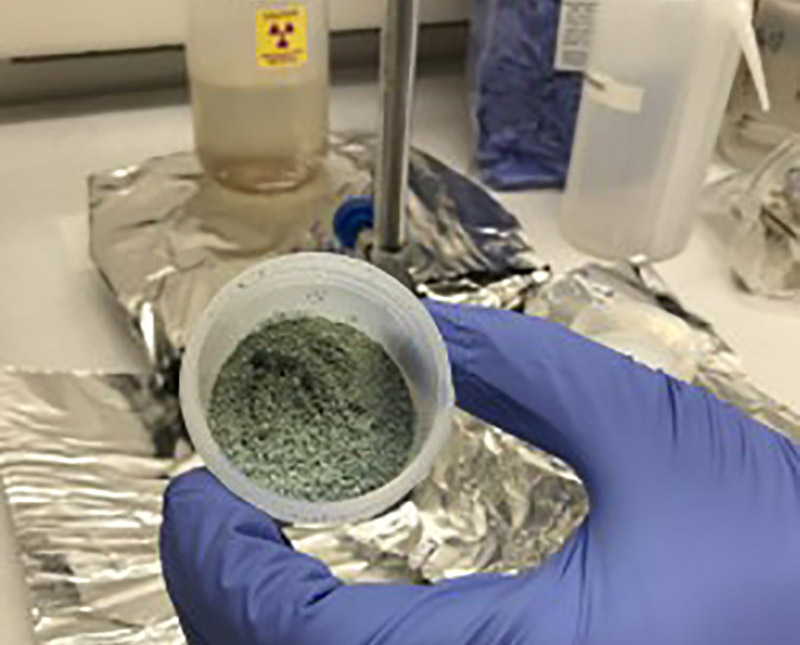Supercomputer gets down to uranium vibes
Research findings may enable better detection of uranium tetrafluoride hydrate, a byproduct of the nuclear fuel cycle, and improved understanding of how environmental conditions influence the chemical behaviour of fuel cycle materials.

A study by US-based researchers from Oak Ridge National Laboratory (ORNL), Savannah River National Laboratory and the Colorado School of Mines used simulations conducted on ORNL’s Summit supercomputer and state-of-the-art neutron spectroscopy experiments conducted at the Spallation Neutron Source to identify key spectral features of uranium tetrafluoride hydrate (UFH). The findings may enable better detection of this environmental pollutant and better understanding of how environmental conditions influence the chemical behaviour of fuel cycle materials.
So why UFH? ‘In this kind of work, we don’t have the luxury of choosing what kinds of materials we work with,’ explains Andrew Miskowiec, an ORNL physicist and lead author of the study. ‘We’re often dealing with small quantities or even just particles of byproducts and degraded material that no one intended to make of compounds that we don’t know much about. We need to know: If we found this material in the field, how would we recognise it?’
UFH forms when uranium tetrafluoride, a radioactive salt routinely used in producing uranium metal, begins to break down after immersion in water for 12 hours or longer. Even though scientists have studied uranium and its power to split the atom for nearly a century, most of those studies have focused on intentional results rather than byproducts.
‘From World War II through the Cold War, we have decades of study, but the main concern was making things work from a production standpoint, like building bombs and powering reactors,’ Miskowiec notes ‘UFH wasn’t considered valuable for those purposes. That means it hasn’t been studied as closely and isn’t as well understood. We need to know as much as we can about these materials to know what to look for when we discover them in the wild.’
Each of uranium’s various molecular forms undergoes a unique set of vibrations, created by the dynamic motion of its atoms, that can act as a signature. The research team used VISION, the world’s highest-resolution inelastic neutron scattering spectrometer, to bombard samples with neutrons, monitor the energy lost or gained, and capture the full range of UFH’s vibrations.
The team used density functional theory, a quantum-mechanical approach to estimating materials’ structure, to model UFH’s properties using the Summit supercomputer.
The combination of detail captured by VISION and the interpretation of large-scale, highly accurate density functional theory calculations made possible by Summit yielded the first complete picture of UFH’s full vibrational spectrum for new insights into the compound’s atomic structure. Future studies will build on the findings to explore UFH’s stability.
‘We now have a better ability to identify this material in the field, and the results will be foundational for understanding other environmental aspects of the fuel cycle,’ Miskowiec says.







